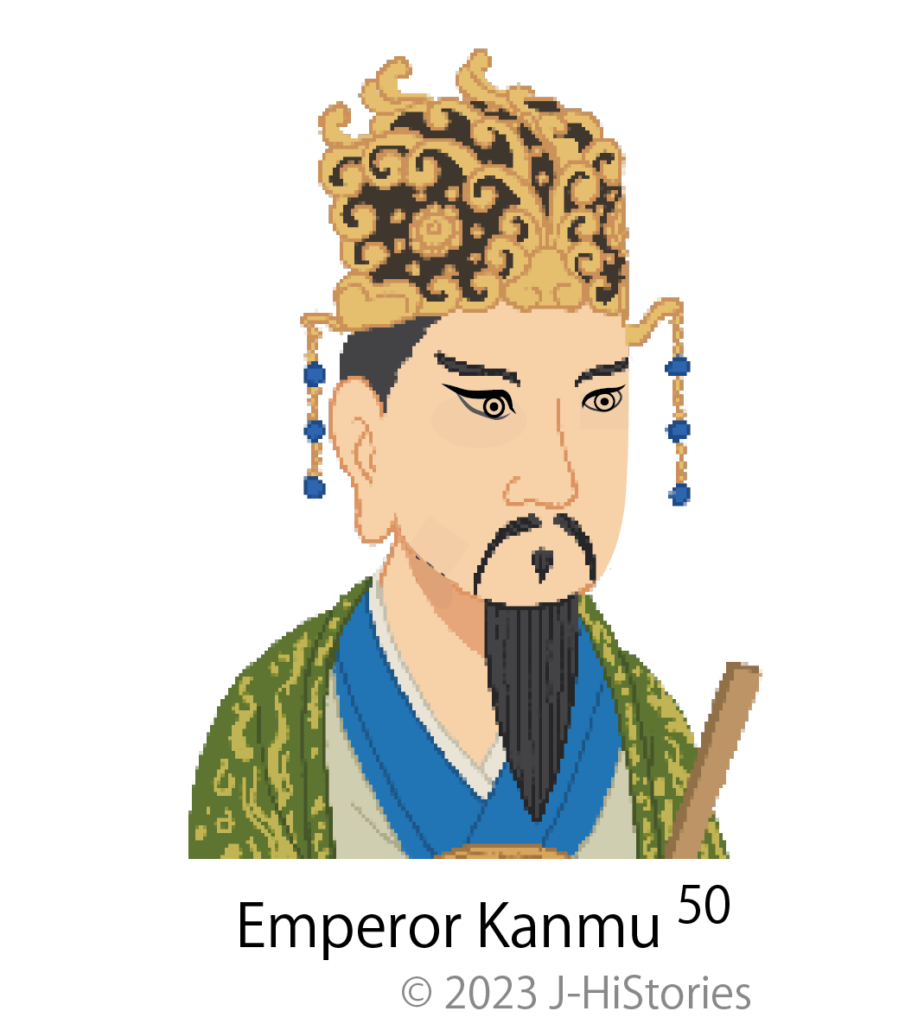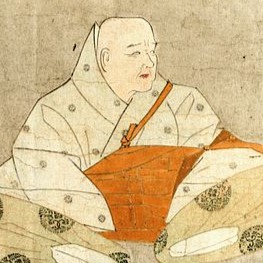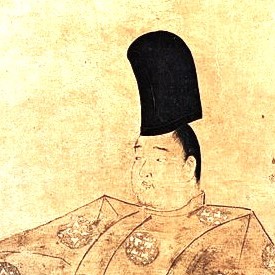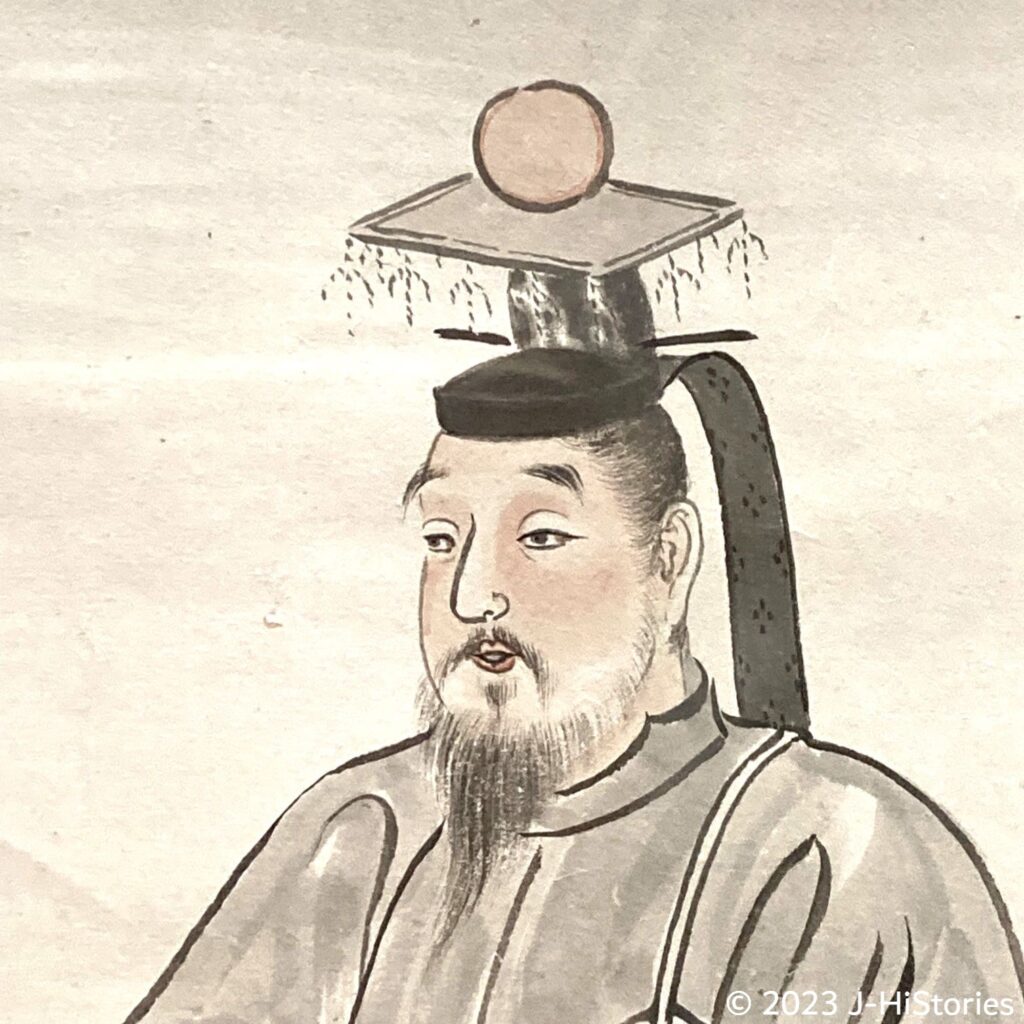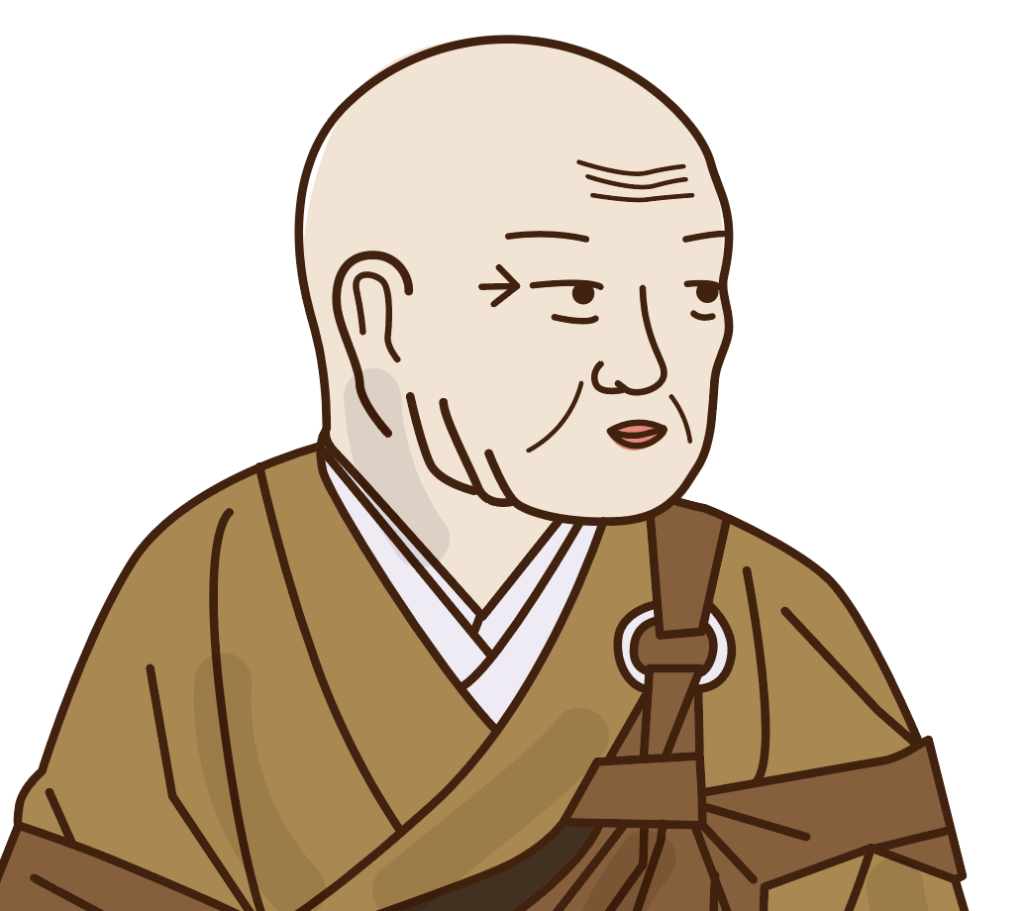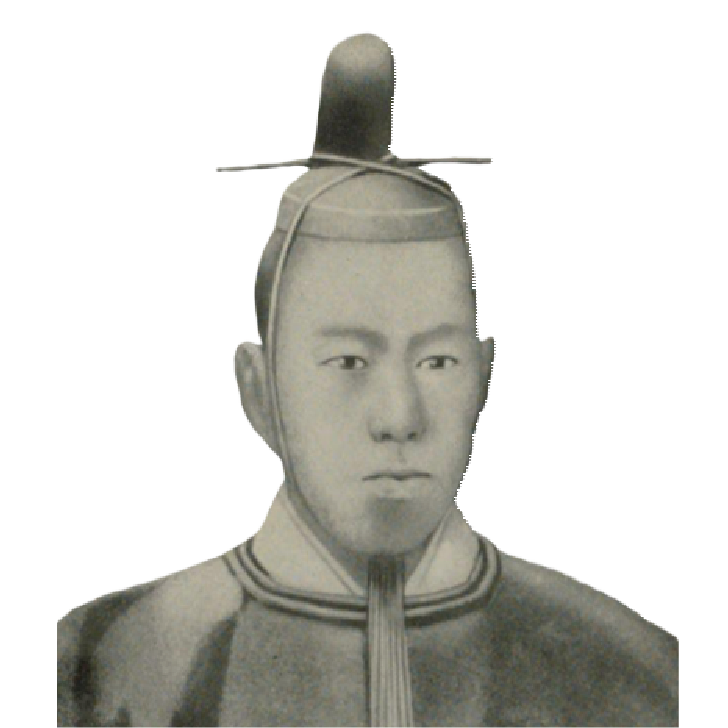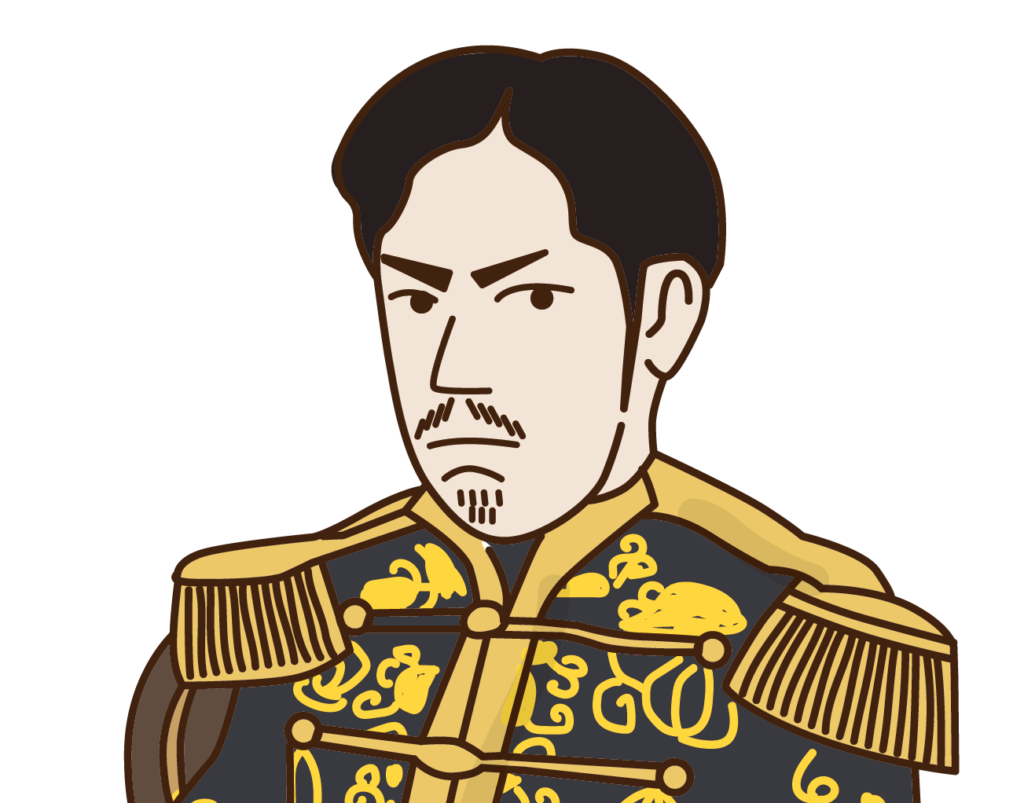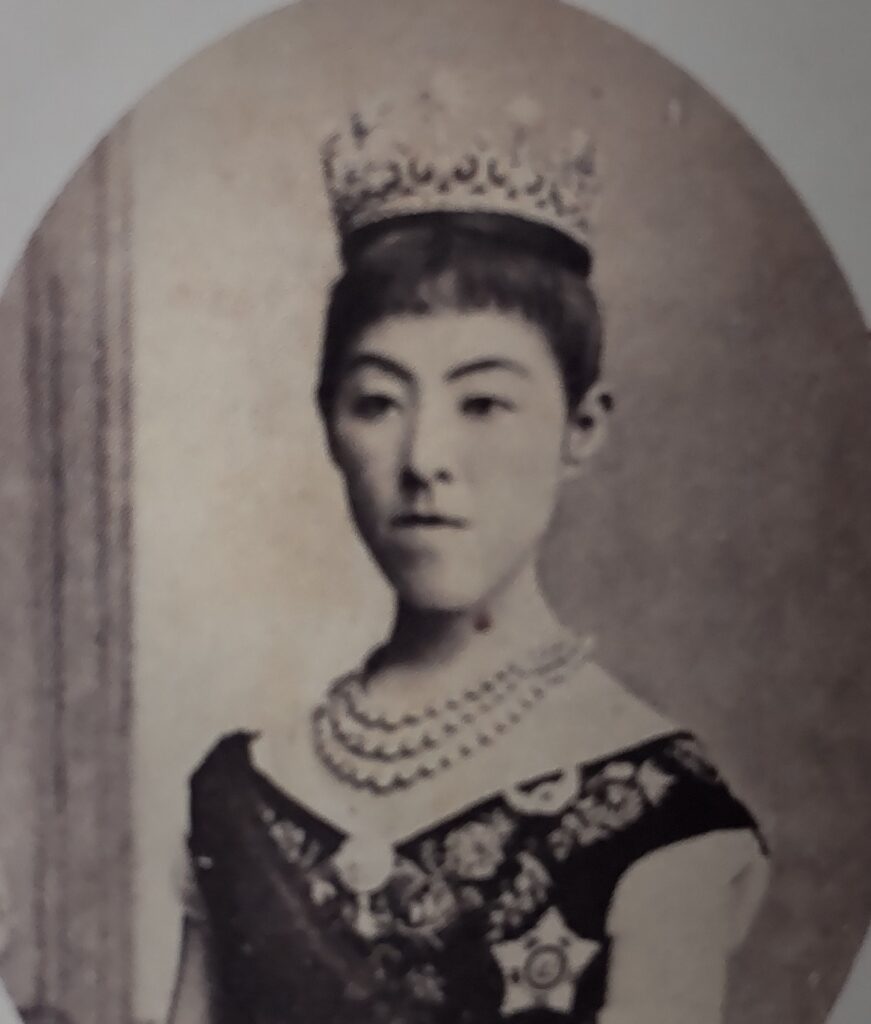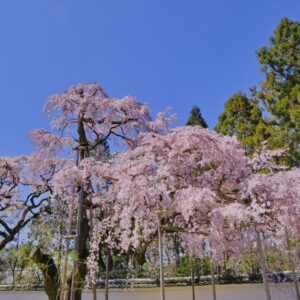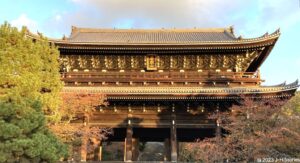Kyoto Imperial Palace, Successive Emperor's Residence
The Heian-kyo had been the center of the nation where the successive emperors resided for over 1200 years since the capital relocation from Nara in 794 by the 50th Emperor Kanmu until 1869 when Emperor Meiji moved to Tokyo, one year after the Meiji Restoration. The highlight is the beautiful Shishinden Hall with its cypress bark roof, where several ceremonies such as the Emperor's first robes and the Sekku seasonal ceremonies were held. In front of the Shishinden, tachibana trees are on the left and cherry trees are on the right. At the Seiryoden, the daily life residence of the emperors, a lion and a komainu (dog) are placed in front of the curtain to protect the emperor. The Kyoto Imperial Palace is always beautiful throughout the four seasons, with its 600 pine trees, weeping cherry trees in spring, wisteria in early summer, and golden ginkgo leaves in autumn. The five white lines engraved on the mud walls show the highest prestige of the palace.
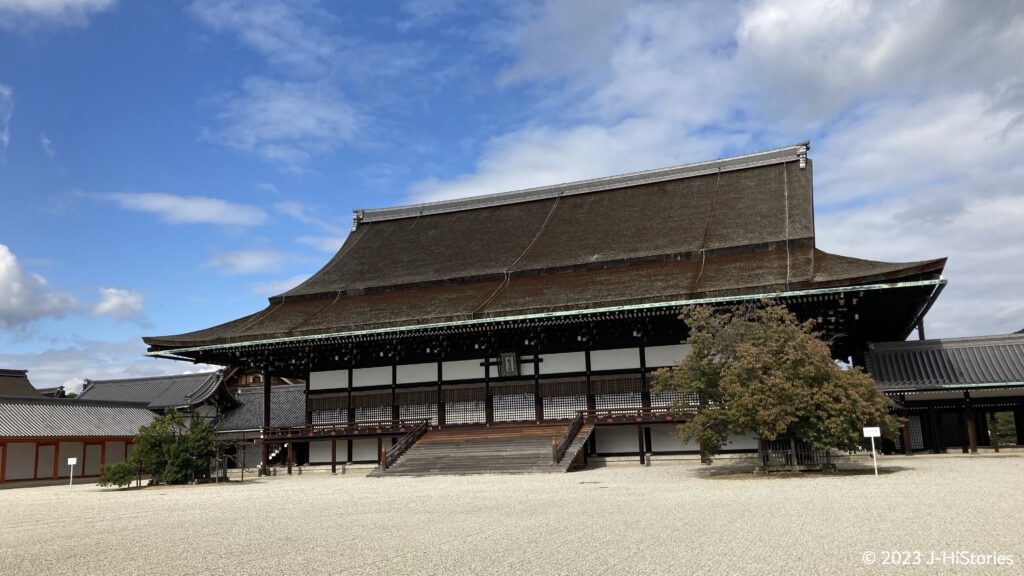
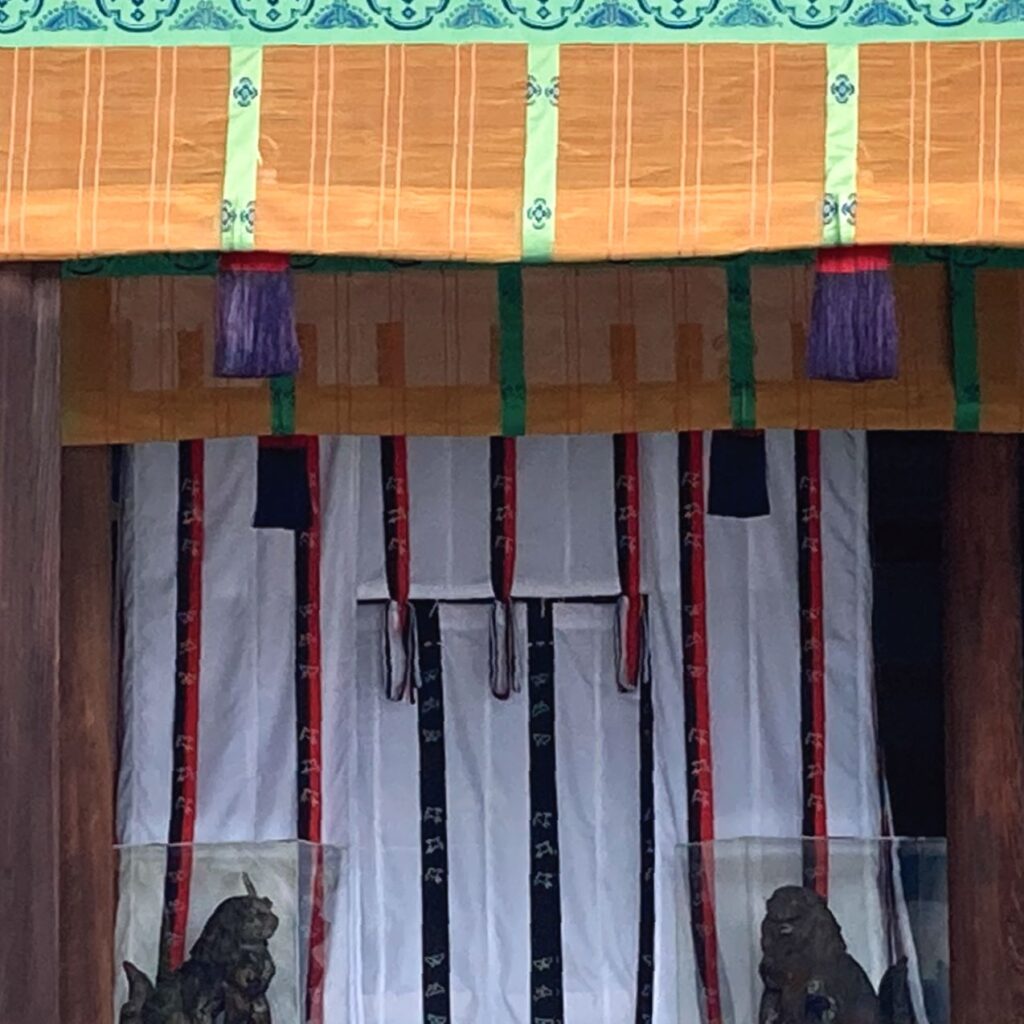
Emperor Jinmu Began an Imperial Lineage
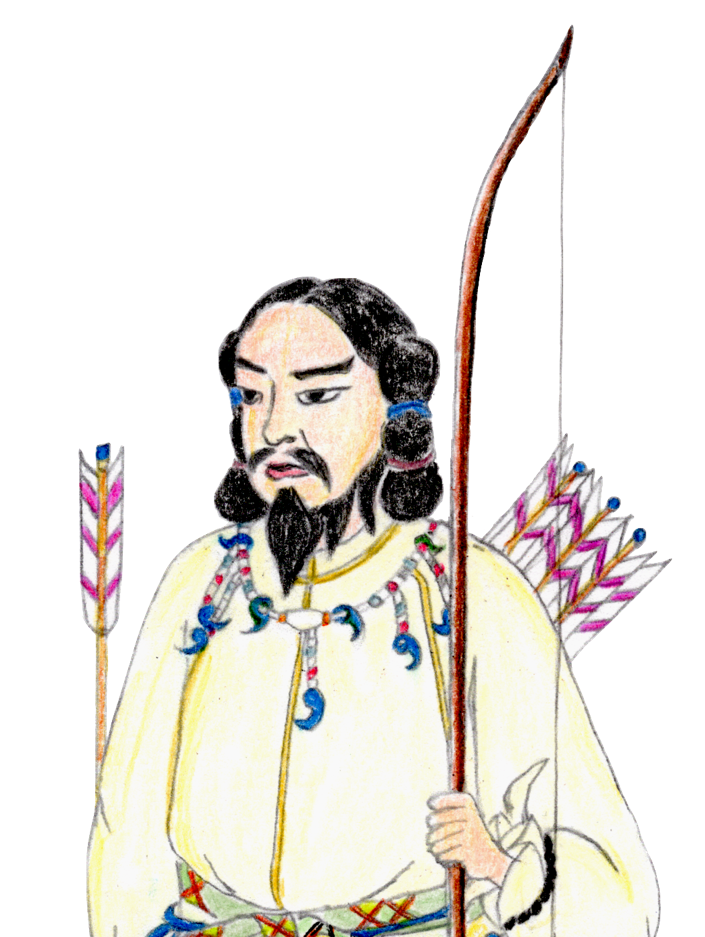
Since ancient times, Japan has lived with the presence of deities in great nature, such as mountains, rivers, oceans, the sun, and the moon. A mythological Emperor Jinmu (神武天皇), the fifth grandson of the Sun Deity, Amaterasu Omikami, united many deities and was the first emperor to appear in Japanese historical books. Aiming to create a prosperous and peaceful country, he founded the Kashihara Imperial Palace at the foot of Mt.Unebi in Nara. This is the place where a nation was founded. After that, several emperors ruled the nation in Nara, such as Emperess Suiko with Prince Shotoku, Emperor Shomu, and more.
Emperor Kanmu Moved the Capital to Kyoto
The 50th Emperor Kanmu (737-806, 桓武天皇) designated Kyoto as the capital, moving from Nara in 794, to create a new country away from the overly powerful Buddhist forces and the Fujiwara clan. Since then, successive emperors administrated and resided at the Kyoto Palace for over 1000 years. He led an active political life, promoting new Buddhism by patronizing Saicho and Kukai and bringing the Emishi of the Tohoku region under his rule. His spirit was enshrined at Heian Jingu Shrine. >> Read More
Emperor Gosanjo's direct rule ironically triggered the germ of the samurai government
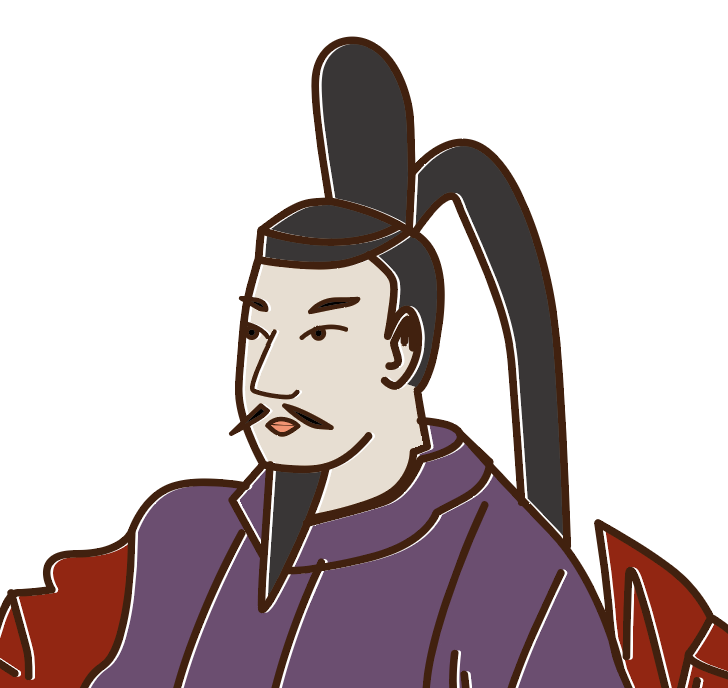
In 1068, the 71st Emperor Gosanjo (1034-1073, 後三条天皇) ascended the throne, making for the first time in 170 years, who did not have any bloody relationship with the powerful noble, Fujiwara clan. Till then, the Fujiwara family had been ”Sessho" (regent) or “Kanpaku” (adviser to emperors), wielding significant political power. Emperor Gosanjo implemented significant reforms that strengthened the power of the emperors, including the issuance of the "Order for the Reform of Manor”. This order reduced the number of manors, which had been Fujiwara’s financial base, to one-third. However, Gosanjo’s reign was cut short, lasting only six years due to his death. To continue his father’s legacy, the next 72nd Emperor Shirakawa (1053-1129, 白河天皇) abdicated from the throne only after his 9 years of regions and implemented the “Insei” or cloister government system, whereby he assumed direct control of state affairs. He maintained his grip on power for almost 34 years. This system lasted for five generations until the 77th Emperor Go-Shirakawa (1127-1192, 後白河天皇). In addition, Emperor Shirakawa established the "Hokumen-no-Bushi" or Imperial Palace Guard, which ironically led to the birth of the samurai government later.
Emperor Go-Shirakawa Tried to Restore Imperial Power v.s. Emerging Samurai
In the late Heian period (794-1185), the samurai, originally the military guardians of the emperors, rose to power and Taira Kiyomori became the head of the imperial court to gain political power. After the Taira clan ended, Minamoto Yoritomo established Japan's first samurai government in Kamakura. Deftly dealing with the political strife and warfare centering on the Genpei War and the changing times, Emperor Go-Shirakawa continued to try to restore and strengthen imperial power for 30 years. >> Read More
Emperor Go-Toba Fought Against the Samurai and was Exiled
The 82nd Emperor Go-Toba (1180-1239, 後鳥羽天皇), later known as the retired emperor, was the first emperor to be exiled to Oki Islands in 1221 by Hojo Yoshitoki, a samurai and regent of the Kamakura Shogunate, during the Jokyu War. It was an unheard-of postwar process. A few months before the war, Emperor Go-Toba had ordered the capture of Yoshitoki to recover political power from the Kamakura Shogunate. He aimed to address the issue of declining income, as donations from manors in eastern Japan under the control of the Kamakura Shogunate had been suspended, resulting in a decline in income for the emperor. However, this attempt failed and the Kamakura Shogunate's rule expanded beyond the eastern part of the country, spreading throughout Japan. Emperor Go-Toba died in hopelessness. This was a turning point in history, as it established samurai hegemony that lasted until the Meiji Restoration in 1868. >> Read More
Emperor Go-Daigo Overthrew the Shogunate
The 96th Emperor Go-Daigo (1288-1339, 後醍醐天皇) successfully overthrew the Kamakura Shogunate but failed in his direct rule, which lasted only three years. He fled from Kyoto to Yoshino and established his southern court in the middle of Mt. Yoshino, but he passed away without returning to the Kyoto Imperial Palace. >> Read More
Emperor Gonara Prayed In the Extremely Poor for the Peace and Tranquility of the Nation & People
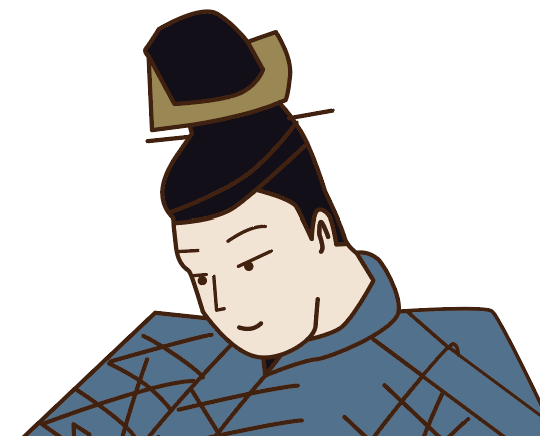
After the 10-year-long Onin War (1467-1477) that devastated Kyoto, the 105th Emperor Gonara (1497-1557, 後奈良天皇) ascended to the throne in 1526 in a war-torn world. As a result, he was destitute and unable to hold his coronation until 1536, nor hold the Daijosai Festival to celebrate the succession of an emperor until 1556. Several diaries of court nobles and ladies documented the difficult circumstances of the time: (1) the wall of the Kyoto Imperial Palace was broken, (2) the main building of Ise Jingu Shrine, where the Amaterasu Deity (the Imperial ancestor) was enshrined, was on the brink of collapse, and (3) the main ritual at Ise Jingu Shrine was discontinued. Despite these challenges, Emperor Gonara continued to pray for the peace and tranquility of the nation and the people. This is a testament to the emperor's unwavering commitment to his duties, despite his difficulties.
Emperor Gomizunoo Spent His Days of "Patience".
The 108th Emperor Gomizunoo (1596-1680, 後水尾天皇) faced increasing pressure from the Tokugawa Shogunate, which had political, economic, and military power. To illustrate, (1) the "Kinchu Narabini Kuge Shohatto" was issued in 1615, the first law in Japan governing the Imperial householders and court nobles, strictly prohibiting their involvement in politics. (2) Gomizunoo married Tokugawa Yasuko (1607-1678, 徳川和子), the granddaughter of Tokugawa Ieyasu (1543-1616, 徳川家康), in 1620 at the suggestion of the Tokugawa Shogunate, despite already having a prince and a princess with his beloved lady. This was Japanese history's first marriage between an Emperor and a Samurai lady. This kept the emperor and the imperial court out of politics during the Edo period (1603-1868). Despite these pressures, Gomizunoo maintained Imperial authority through his patience, persistence, and wisdom, and built the Shugakuin Imperial Villa, one of the most exceptional villas of royal court culture. >> Read More
Emperor Komei Supported the Last Shogun, Tokugawa Yoshinobu
In the late Edo period (1603-1868), the 121st Emperor Komei (1831-1867, 孝明天皇) was the greatest supporter of Tokugawa Yoshinobu (1837-1913, 徳川慶喜), the last shogun of the Tokugawa Shogunate, who took charge of the country amid the growing movement of "Sonno-Joi," a philosophy of respect for the emperor and rejection of external pressures and foreigners. Emperor Komei died suddenly just as the political conflict between the shogun, Tokugawa Yoshinobu, and the anti-shogunate faction led by the Satsuma and Chochu domains was intensifying and reaching its peak. >> Read More
Emperor Meiji Shifted the Rule from Samurai to Emperors
The 122nd Emperor Meiji (1852-1912, 明治天皇) ascended to the throne as soon as his father, the 121st Emperor Komei (1831-1867, 孝明天皇), passed away during the upheaval period at the end of Edo period. Due to the powerful pressures to be colonized by Western powers, the trend of nationalism, and a growing consciousness of national defense, the Meiji Restoration was realized in 1868. One year later, he moved to Edo with Empress Shoken. Emperor Meiji devoted himself to creating a modern state. The deified spirits of Emperor Meiji and his consort, Empress Shoken, are enshrined at Meiji Jingu Shrine, which was constructed with the services of the people. >> Read More
Empress Shoken Paved the Path for Relief Work in Peacetime
Empress Shôken was a visionary empress who led Japan into modernity during the new Meiji era as the empress of Emperor Meiji. Notable among the Empress's efforts were welfare, especially several supports and her activities to the Red Cross Society under the Empress's benevolence and charity, sericulture, and girls' education. Her aspirations continue today as The Empress Shôken Fund, the world's oldest international humanitarian fund, which has existed for more than 100 years and continues to provide humanitarian assistance to people around the world. >> Read More
The Emperor’s Role, Inherited Over Generations as the Chief and Father or Mother of the People
The emperor’s role, inherited over generations as the chief and father or mother of the people, has been an ultimate authority throughout various periods in history. The Kyoto Imperial Palace has no defensive facilities such as moats, stone walls, or watchtowers, and is instead surrounded by mud walls, making it completely unarmed. This reflects the Japanese people's deep respect for the Imperial family and their belief that the Emperor would never be attacked by his people, allowing the Imperial family to live together with the people in harmony. The current Emperor and Empress, the 126th in the line of succession, continue the traditions of their predecessors by working closely with the people and striving for their well-being, as well as promoting peace and tranquility in the world. Through their ceremonial duties, state functions, and involvement in international goodwill efforts, as well as their support for disaster-stricken areas, they serve as symbols of national unity.
A visit to both the Kyoto Imperial Palace and the Imperial Palace offers a chance to contemplate the rich history of the Japanese Imperial family and their close relationship with the people.
Recommendations to visit
Kyoto Imperial Palace
- Access: 10 min subway from Kyoto Station to Imadegawa Station (今出川) on Karasuma Line. A 10 min walk to Kyoto Imperial Palace
The Imperial Palace
- Access: 10 minutes walk from Nijyubashi station or Otemachi station of subway. → for more information

